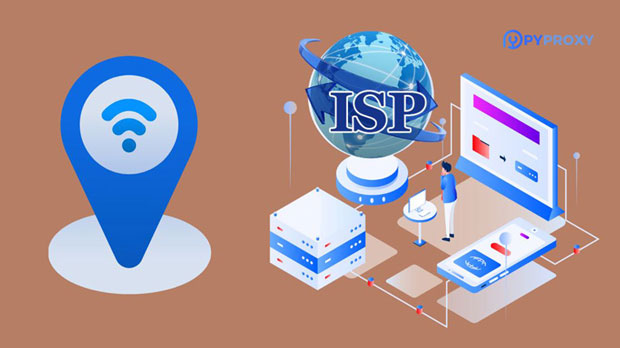Analysis of the Differences between Residential Proxy Server Socks5 and HTTP Proxy
In modern Internet applications, proxy server has become an important tool for privacy protection, network security and improving access speed. The two common proxy protocols are Socks5 residential proxy server and HTTP proxy. Although these two proxy protocols have similarities, there are significant differences in their working principles, application scenarios, and performance. This article will delve into the main differences between SockS5 residential proxy and HTTP proxy, helping users choose the appropriate proxy type based on their actual needs socks5 proxy is a more universal proxy protocol that supports various types of network requests, including TCP and UDP protocols, and is widely used in anonymous browsing, P2P downloading, online gaming, and other scenarios. HTTP proxy is mainly used to process web traffic through the HTTP protocol, which can better support web browsing and forwarding of HTTP requests. Socks5 residential proxy servers typically provide services through residential IP addresses, which enables them to simulate real user network behavior, increase anonymity, and bypass geographical restrictions. In contrast, HTTP proxies are more focused on browser level proxy services, suitable for regular web page access and traffic forwarding, but they are inadequate for more complex application requirements such as P2P traffic, non HTTP protocols, etcBelow, we will analyze the differences between SockS5 residential proxy and HTTP proxy from multiple perspectives, including protocol features, privacy protection, performance, application scenarios, etc., to help users make more reasonable choicesI. Comparison of Protocol Characteristics There are significant differences in protocol characteristics between SockS5 proxy and HTTP proxy. These differences not only affect the application scenarios of agents, but also directly determine their different performances in terms of performance, security, and functionality1. Protocol hierarchyHTTP proxy mainly works at the application layer (Layer 7 of the OSI model) and only handles HTTP protocol traffic. Its working method is to receive HTTP requests from the client and forward them to the target server, and then send the HTTP response returned by the server to the client. This process is usually initiated by web browsers, so HTTP proxies are suitable for applications that only involve the HTTP protocol, such as web browsingIn contrast, Socks5 proxy works at the session layer (Layer 5 of the OSI model) and supports protocols beyond HTTP, including FTP SMTP、POP3、 And other network protocols such as UDP. Due to its extensive protocol support, Socks5 proxy can handle a wider range of traffic, making it particularly suitable for application scenarios that require support for P2P traffic or other protocols2. Connection methodHTTP proxies typically work based on a request response model. When a client sends a request to an HTTP proxy server, the proxy server parses the request and accesses it based on the URL of the target website, then returns the data to the client. This approach is suitable for handling simple web traffic, but for applications that require high real-time performance (such as video streaming, online games, etc.), HTTP proxies may cause delays and instabilityThe Socks5 proxy uses session level connections, and the connection between the client and the proxy server can remain stable for a long time, making it suitable for handling long-term network traffic. Through this approach, Socks5 agents can provide a smoother user experience, especially in high bandwidth demanding scenarios where they have an advantageII. Privacy Protection and AnonymityOne core application of proxy servers is to improve user anonymity and privacy protection. There is a significant difference in performance between Socks5 proxy and HTTP proxy in this regard1. The anonymity advantage of Socks5 proxyDue to its protocol support for various types of network traffic, Socks5 proxy is more powerful than HTTP proxy in hiding users' real IP addresses. Socks5 proxy can not only hide HTTP traffic, but also mask traffic from other protocols such as FTP, SMTP, etc. Therefore, Socks5 proxy can provide more comprehensive anonymity protection, avoiding the exposure of users' real IP due to certain traffic leaksIn addition, the Socks5 proxy makes fewer modifications to the requested data during data transmission, making it more difficult for the user's original request content and data packets to be tampered with, reducing the risk of information leakage2. Privacy Protection Capability of HTTP ProxyIn contrast, HTTP proxies are mainly used for web traffic and can only hide data transmitted through the HTTP protocol. When using an HTTP proxy, the user's IP address can be disguised, but if the user is accessing a non HTTP protocol service, the HTTP proxy cannot provide protection. For applications that require high-level privacy protection, such as anonymous browsing and avoiding geographical location restrictions, HTTP proxies may not be flexible enoughIn addition, HTTP proxy servers usually perform some data caching or request filtering during transmission, which may lead to user data leakage or encounter traffic analysis. Although HTTP proxy can provide some privacy protection for general web browsing, its security and anonymity are weaker compared to SockS5 proxyIII. Performance and StabilityPerformance and stability are important factors in measuring the quality of proxy services. Socks5 proxy and HTTP proxy also perform differently in these aspects1. Performance of Socks5 ProxyDue to its support for multiple protocols, Socks5 proxy has a wider range of applications and can also handle large-scale data transmission and high bandwidth tasks. Socks5 proxies typically provide lower latency and higher transfer speeds, especially in high traffic applications such as P2P downloads and large file transfersIn addition, the connection method of Socks5 proxy server is more flexible, which can support long-term connections and multiple sessions, thus ensuring the stability of network connections and reducing the number of disconnections or reconnections. This is particularly important for application scenarios that require high stability and persistent connectivity2. The performance limitations of HTTP proxyThe performance of HTTP proxy is relatively limited compared to SockS5 proxy. Due to its limited support for HTTP traffic, it is prone to bottlenecks when handling large-scale data transmission, especially in video streams or multiplayer online games that require real-time transmission, which may result in high latency, lag, and other issues. In addition, the request response model of HTTP proxy itself increases the complexity of data transmission, which further affects its performanceAlthough HTTP proxy is suitable for ordinary web browsing, its speed and stability may not meet the needs of users for other high-performance applicationsIV. Comparison of Application ScenariosDifferent proxy protocols are suitable for different application scenarios. Socks5 residential proxy and HTTP proxy each have their unique advantages, and choosing the appropriate proxy protocol depends on specific application requirements1. Application scenarios of Socks5 proxyDue to its ability to support multiple protocols, Socks5 proxy has a wide range of applications in various scenarios. For example, in applications that require high privacy protection and stability, such as anonymous browsing, online gaming, P2P downloading, and video streaming, Socks5 proxy can provide good support. Especially Socks5 residential agents, as they use IP addresses from real residential networks, can effectively bypass IP blocking and geographical restrictions, simulate real user network behavior, and have higher availability and concealmentAnother common application is the use of Socks5 proxy for automated scripts and crawlers to capture data. Due to the rich protocols supported by SockS5 proxy, which can handle various network requests, it is very suitable for hiding the real IP address of crawlers and avoiding being banned by target websites2. Application scenarios of HTTP proxyHTTP proxy is more suitable for regular web browsing and lightweight network tasks. For example, HTTP proxy is widely used in the internal network of enterprises, which can be used to control employees' internet access, filter out malicious websites, and accelerate webpage access speed. In Internet advertising and SEO optimization, HTTP proxy is also commonly used to access web pages in batches for data analysis and competitor analysisHowever, for tasks that require high anonymity or support for complex network protocols, HTTP proxies are not suitable. For example, when users need to perform P2P downloads or access restricted video content, HTTP proxies cannot provide the necessary supportV. ConclusionOverall, there are significant differences between Socks5 residential proxy server and HTTP proxy in terms of working principles, privacy protection, performance, and application scenarios. Socks5 proxy is suitable for scenarios that require high privacy protection, cross platform access, and complex network tasks due to its support for multiple protocols, higher anonymity, and stability. HTTP proxy, on the other hand, has become the preferred tool for many daily applications and enterprise network management due to its simplicity, ease of use, and suitability for web browsingWhen choosing a proxy service, users should decide which proxy protocol to use based on their own needs. If you value support for multiple network protocols, stability, and high anonymity, Socks5 residential proxy server is undoubtedly a better choice. For simple web browsing and lightweight tasks, HTTP proxies can meet basic needs
2024-12-17
























































